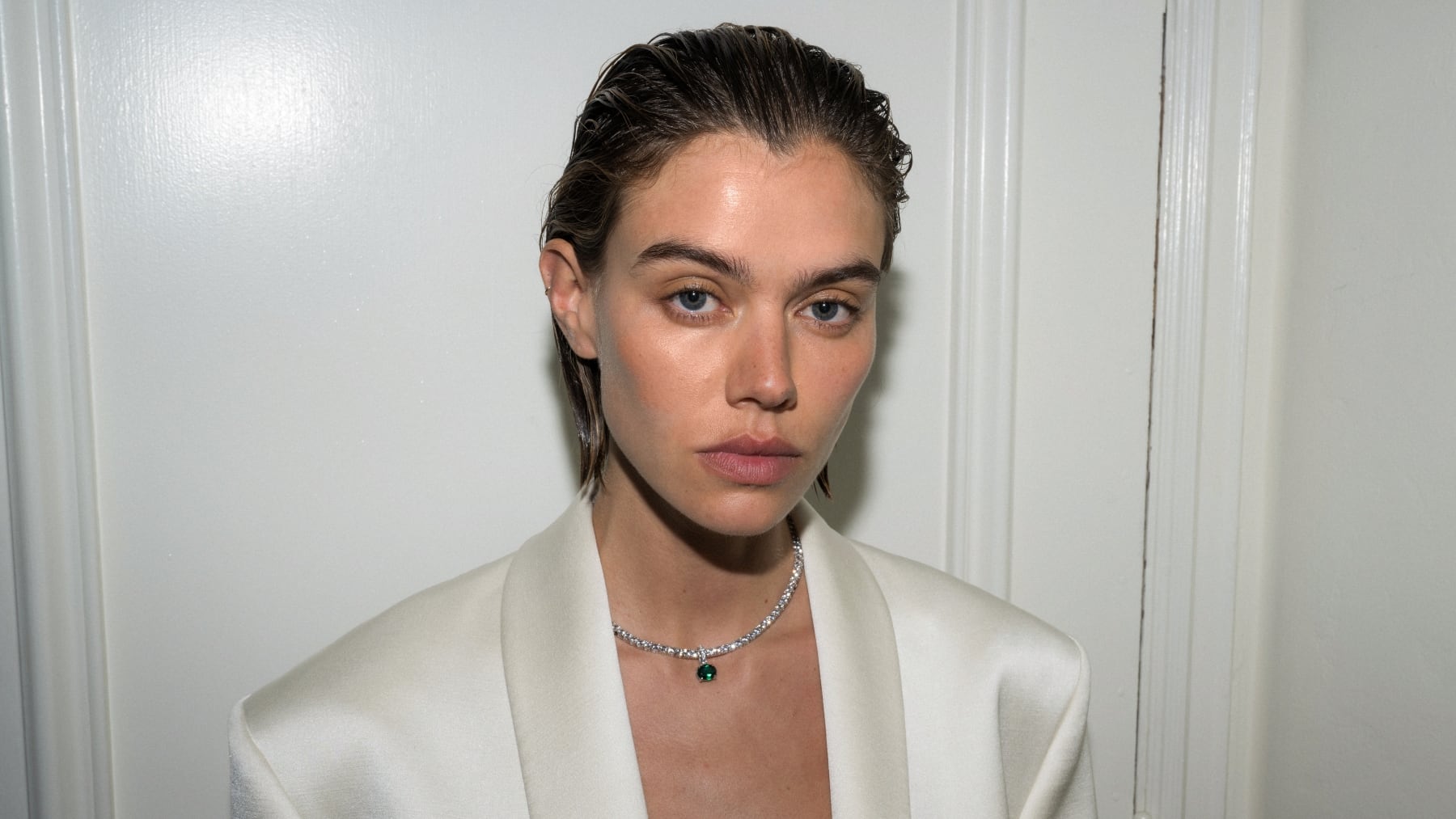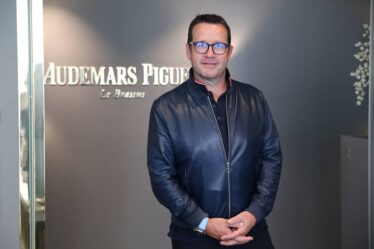
Five years ago, Meg Strachan thought she had a surefire start-up idea: take the lab-grown diamonds that were just starting to hit the market and give them the fashion treatment.
She launched Dorsey in 2020, exclusively selling jewellery made with the stones. But Strachan couldn’t get a single investor to back her brand.
As it turns out, she was just early. Lab-grown diamonds now represent over 17 percent of the overall diamond market, according to diamond research firm Edahn Golan. Major jewellery sellers, from mass-market brands like Pandora to Prada and other luxury labels, have enthusiastically embraced the technology. Meanwhile, mined-diamonds giant De Beers’ sales plunged by one-third last year.
If Pandora deserves credit for bringing lab-grown stones to the mall, it’s Dorsey that’s made them a fixture on Instagram and TikTok. The brand’s signature rivières — tennis necklaces in a variety of shapes, colours and styles — have also been namechecked in Vogue, The New York Times and the Wall Street Journal. Justin Bieber wore one on tour; Hailey Bieber and Taylor Swift are fans. It’s not just the necklaces: Bella Hadid wore a pair of Dorsey earrings to the 2022 Met Gala, and just last week, podcast host Alex Cooper wore a Dorsey tennis bracelet on the cover of WSJ. Magazine.
Dorsey is one of many direct-to-consumer brands that have sprung up in the last decade in a bet that young consumers are ready to look beyond Cartier and Tiffany for their jewellery. While many of these new brands offer a fashion-centric twist and are savvy about social media, Dorsey’s pairing of vintage-inspired designs with the newness — and affordability — of lab-grown stones has helped it stand out from the pack.
Investors, too, have changed their tune: When Strachan raised $1 million in September 2021, she didn’t have to do any outbound requests. Dorsey is still a relatively small business. Its revenue is in the eight-figure range, Strachan said, with sales on track to double this year. The company has been profitable since the start.
“That rejection was the best thing that ever happened to me as a human being,” she said of Dorsey’s early days. “What doesn’t kill you makes you a much better company.”
Right In the Middle
Dorsey has an origin story that is, at this point, a start-up blueprint: Strachan, a veteran of DTC labels like the influencer-founded apparel and accessories brand Anine Bing as well as activewear sellers Girlfriend Collective and Carbon38, saw a hole in the market and set out to fill it.
“I would go into jewellery stores, and it just felt like everything was out of reach,” she said. “It’s so expensive to buy a diamond necklace; the average customer is not spending $10,000 or $20,000. But I was a 33-year-old executive who wanted to have a beautiful piece of jewellery.”
She was also inspired by the jewellery collection of her late grandmother, the brand’s namesake — filled with vintage pieces that felt unique and worth passing onto the next generation. Though today Dorsey is most synonymous with its rivière necklaces and tennis bracelets, it also sells earrings like the Crawford, which features a two-carat, Asscher-cut lab-grown sapphire in a setting that feels out of another era.
“People think that they are a family heirloom, and it’s like, no, they’re $300 from Dorsey,” influencer Grace Atwood, who is also a Dorsey customer, said of the earrings, adding that she’s seen friends “get on their phones when we’re out to dinner and buy them” on the spot.
That price point — a Riviére necklace, which is made of lab-grown white sapphires, costs around $600 to $700, depending on length and design, while a tennis bracelet is about $300 — make it a splurge, but one much more accessible than the same product with natural diamonds. (A comparable mined diamond necklace from Saks Fifth Avenue costs $16,000.)
It’s not unusual for independent jewellery brands to break through. Unlike in fashion, where big luxury labels dominate, much of the jewellery on the market today is unbranded and sold by family-owned shops. Dorsey is one of the first lab-grown-exclusive brands to break through; the other most notable is Brilliant Earth, a publicly traded mass player.
“The jewellery industry has always had smaller, more independent designers and stores,” said jewellery industry analyst Paul Zimnisky. “In a lot of cases, smaller start-ups and individuals are where trends start.”
With its low price point, even Dorsey’s blingiest products are suited for the everyday. A look through Dorsey’s tagged posts on Instagram shows customers wearing their pieces with a casual summer dress, cut-off denim and even athleisure. Maybe it’s a byproduct of the brand’s pandemic roots. In 2020, the brand’s first full year in business, Strachan found that people still “wanted something sparkly” to wear on their Zoom calls; a pair of necklace or earrings were more visible than a dress or pair of shoes.
The author has shared an Instagram Post.You will need to accept and consent to the use of cookies and similar technologies by our third-party partners (including: YouTube, Instagram or Twitter), in order to view embedded content in this article and others you may visit in future.
Strachan models that approach on her own Instagram, where she shares posts pairing Dorsey with a dress from The Row, a pair of vintage Levi’s or a Chanel jacket with her 34,000 followers. The brand’s visuals, similarly, take on a sleek, more fashion-centric tone.
“When you’re building a brand, contextualising whatever you’re building a brand around is really important, and fashion does that better than a lot of other industries,” said Strachan.
A Changing Industry
Dorsey’s success tracks with — and has contributed to — consumers’ rapid embrace of lab-grown stones.
“She’s made something that was a little taboo, or perceived as not as nice or lesser, into something really cool and covetable,” said Atwood.
The brand has been primarily propelled by word-of-mouth. Influencers are constantly talking about the brand. Dorsey doesn’t do any paid partnerships. Instead, it gifts products, offers a “generous commission” and regifts to partners whose posts perform, according to Tiffany Lopinsky, co-founder of influencer monetisation platform ShopMy, Dorsey’s affiliate partner.
The author has shared an Instagram Post.You will need to accept and consent to the use of cookies and similar technologies by our third-party partners (including: YouTube, Instagram or Twitter), in order to view embedded content in this article and others you may visit in future.
Organic growth has been all the more important for Dorsey because it began without outside funding. Strachan, whose background is primarily in growth marketing for DTC brands, knew that endless spending on online customer acquisition without an eye to profitability wasn’t sustainable.
“I worked for so many companies that lost so much money,” she said. She was determined to not let Dorsey do the same, even if it meant maintaining her full-time job throughout its first year in business and packing orders in her garage. Since launch, it’s never spent more than 15 percent of its gross revenue on marketing.
“Because I didn’t raise a bunch of money, we just always had to have that figured out,” she added.
Looking ahead, the brand has no plans to expand into wholesale but wants to ramp up the custom side of its business — including bridal. (“There are things happening,” she hinted, slipping a marquis-shaped lab-grown diamond ring onto her ring finger.) It’s also iterating on its best-selling products, introducing new versions of the rivière necklaces and Crawford earrings.
One thing that won’t change, however, is her commitment to lab-grown stones. Strachan finds the branding of lab-grown as a lesser counterpart to mined diamonds as “really insulting,” particularly given the fact that it’s the position of the more old-school, male-dominated branch of the industry. Lab-grown’s dominance, she feels, is inevitable.
“People tell us we’re doing it wrong based on the way that jewellery has always been done,” she said. “We’ve just learned to put our blinders on … we’re going to start to feel a shift. The consumer is going to decide it doesn’t matter.”



